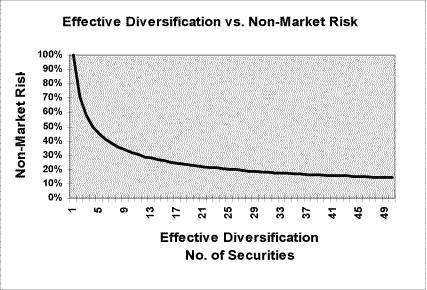What is Diversification Strategy for Asset Allocation
November 15, 2011Knowing what is diversification strategy can help with risk management and asset allocation plus works to help you form a solid investment strategy. Diversification is a form of risk management and asset allocation. There is no way to completely remove risk from your portfolio though there are ways to greatly reduce risk.
Types of Risk
Within your portfolio, there are 2 different types of risk, systematic risk and unsystematic risk. Systematic risk is things that are out of your control such as interest rates, foreign exchange, credit, country, political and market risk. So for example in the event of a 50% market crash, odds are no matter how diversified you are in stocks, your stocks will likely drop as a result. Unsystematic risk effects a single company such as if a company goes bankrupt, accounting fraud or the employees go on strike.
Diversification in Stocks
There are different ways to diversify in stocks. One way to diversify is to own a large number of individual stocks. Though if you own say 20 banking stocks, you could be at risk if banks, in general, should experience a large drop in earnings or go out of favor. So rather than owning a single sector, to get diversification you would need to own many sectors of the market. You can also blend different types of stock such as large to small cap stocks and also different styles of stocks such as value, dividend and growth stocks. You can also have a part of your investment in world markets such as emerging markets. A popular way to diversify in stocks is to own a stock index such as the DJIA or the S&P 500.
Unfortunately, too much diversification isn’t good for you. You don’t need to hold hundreds of securities to be properly diversified. Nobel Prize winner William F. Sharpe published an article in 1972 on the effect of diversification on nonmarket risk.(“Risk, Market Sensitivity and Diversification,” Financial Analysts Journal, January/February 1972, pp. 74-79.)
The graph shows that the number of stocks held does reduce your risk, however, this reduction becomes negligible once the portfolio reaches 25 or 30 securities, spread across several sectors.
Diversification for your Portfolio
Diversification for your Portfolio is buying different investment types to makeup your portfolio. There are 2 basic classes of investments, which are cash and assets. Cash pays a fixed interest rate yet is vulnerable to inflation risks. Assets posse deflation risks in a weak economic environment and may or may not pay any fixed income. A traditional portfolio is made up of cash, bonds and stocks. Nontraditional portfolios can consist of things outside the stock market such as commodities, real estate, private equity and even collectibles.
Is your goal to preserve money, generate income or get high returns? If you are a conservative investor, you probably want at least ½ of your portfolio in cash and if you an aggressive investor than you will want more than ½ of your investments in assets. You will need to rebalance your portfolio over time as some parts of portfolio go up and down in value.
Summary
So while diversification is a good money management, it can, however, reduce your gains if one particular stock would happen to skyrocket. While taking a high risk can yield great rewards for a small time period, people that take high risks will often end up far behind the person with a steady plan in the long run.



I definitely agree. Keeping your voice consistent when blogging is very important. Every once in all it’s good to throw in a really unique, out of the ordinary post, but still keep your writing style.
Great post!
ya diversification looks good money management